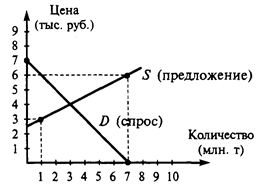Text V. DEVELOPMENT OF CULTURE
People live in human societies. A society is the largest form of human social organization that consists of people who live in the same territory, are relatively independent of people outside their area and share a common heritage or a common culture. Culture is the totality of learned, socially transmitted behavior. It includes ideas, values and customs of groups of people. Members of a society learn this culture and transmit it from one generation to the next. They preserve their distinctive culture through literature, video recordings and other means of expression. If it were not for the social transmission of culture, each generation would have to reinvent television, not to mention the wheel. The study of culture is an important part of contemporary sociological work. Through advances in culture, human beings have come a long way from our prehistoric heritage. Human beings have made dramatic cultural advances. We can send astronauts to the moon, we have such achievements as the symphonies of Beethoven, the paintings of Van Gogh, the poetry of Byron and the novels of Dostoevsky. Despite their differences, all societies have attempted to meet basic human needs by developing aspects of shared, learned behavior known as cultural universals. Cultural universals are general practices found in every culture. Anthropologists compiled a list of such universals that includes the following: athletic sports, attempts to influence weather, bodily adornment, calendar, cooking, courtship, dancing, dream interpretation, family, folklore, food habits, funeral ceremonies, games, gift giving, language, laws, medicine, music, myths, numerals, personal names, property rights, religion, sexual restrictions, tool making. Many cultural universals are, in fact, adaptations to meet essential human needs, such as people's need for food, shelter and clothing. Yet, the manner in which they are expressed will vary from culture to culture. For example, one society will attempt to influence its weather by seeding clouds with dry ice particles to bring about rain. Another culture may offer sacrifices to the gods in order to end a long period of drought. Each generation and each year most human cultures change and expand through the process of innovation and diffusion. An innovation is the process of introducing an idea or object that is new to culture. There are two forms of innovation: a discovery and an invention. A discovery involves making known or sharing the existence of an aspect of reality. The identification of a new moon of Saturn is an act of discovery. By contrast, an invention results when existing cultural items are combined into a form that did not exist before. The bow and the arrow, the automobile and the television are all examples of inventions, as are Protestantism and democracy. The term diffusion refers to the process by which a cultural item is spread from group to group or from society to society, i.e. to the process of adopting ideas, technology and customs from other cultures. For example, breakfast cereal comes originally from Germany, candy from the Netherlands, chewing gum from Mexico and the potato chip from the America of the Indians. Diffusion can occur through a variety of means, among them exploration, military conquests, missionary work, the influence of the mass media and tourism. Sociologists make a useful distinction between elements of material and nonmaterial culture. Material culture refers to the physical or technological aspects of our daily lives including food items, houses, factories and raw materials. Nonmaterial culture refers to ways of using material objects and to customs, beliefs, philosophies, governments and patterns of communications. Generally, the nonmaterial culture is more resistant to change than the material culture is. Therefore, foreign ideas are viewed as more threatening to a culture than foreign products are. We are more willing to use technological innovations that make our lives easier than ideologies that change our way of seeing the world.
|




